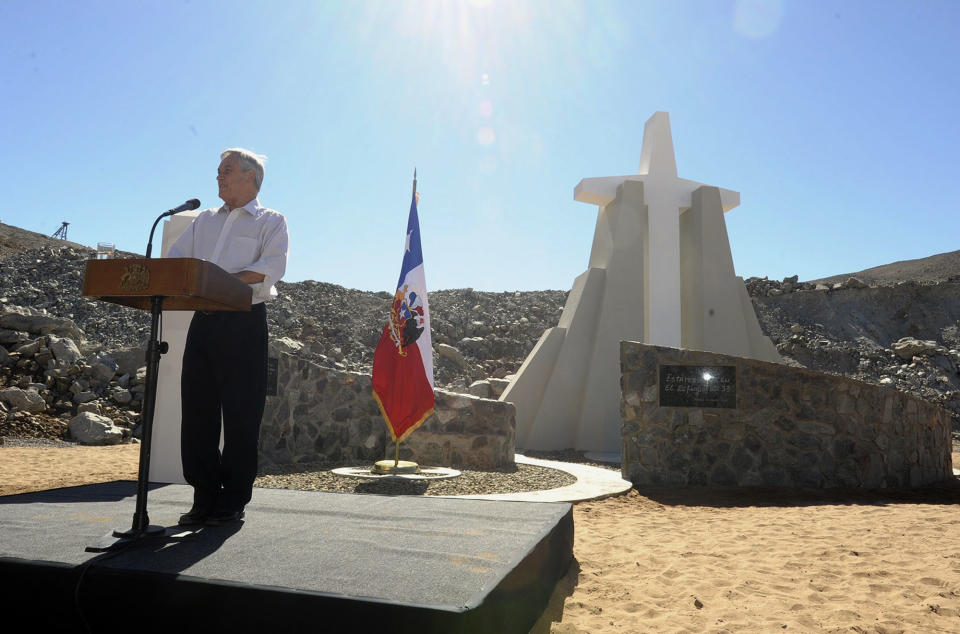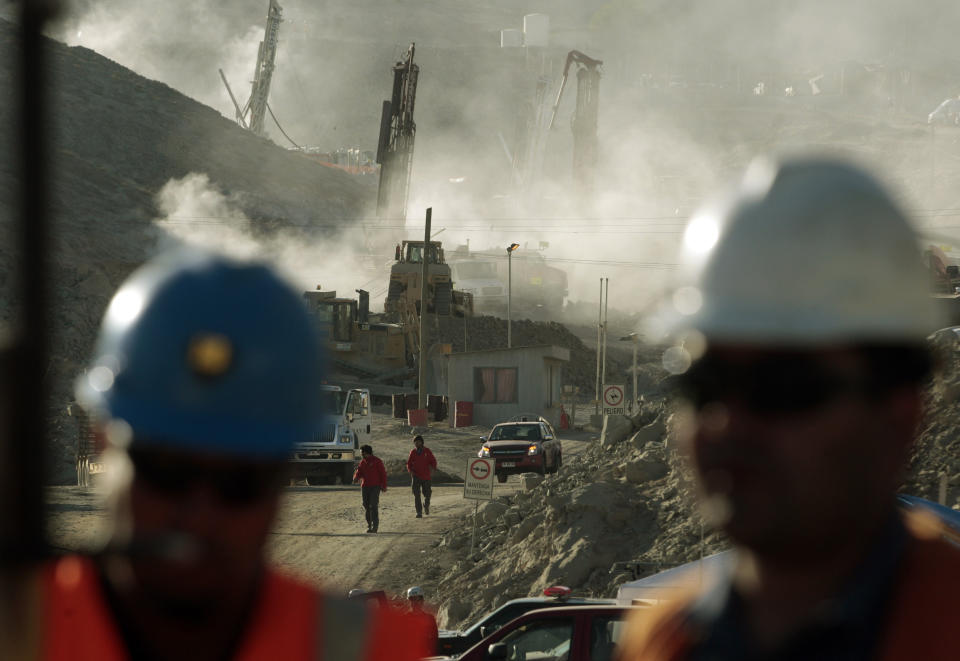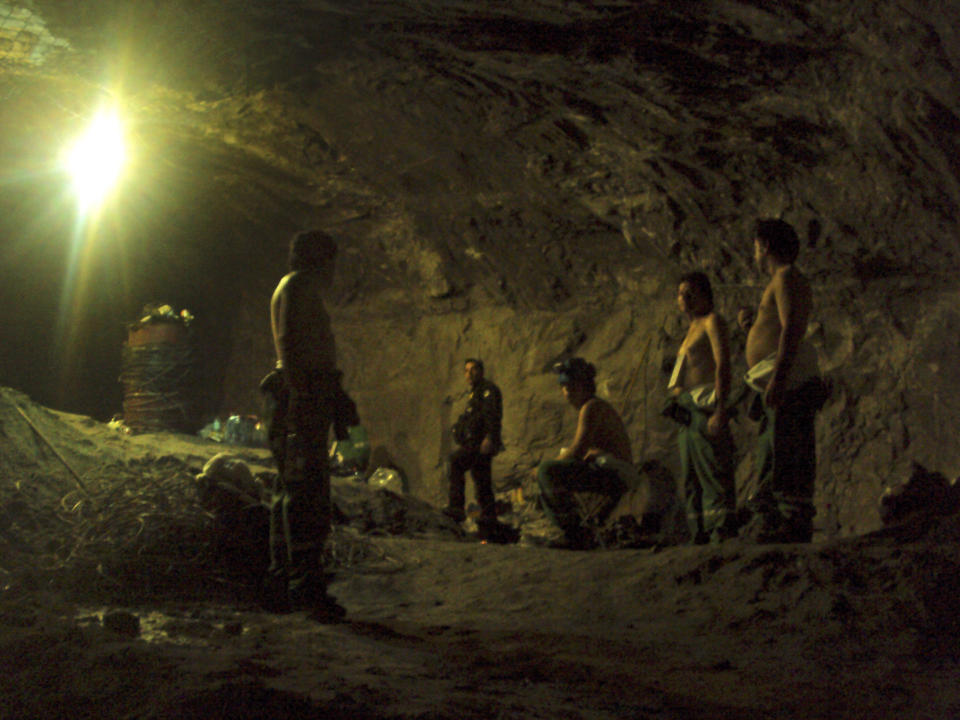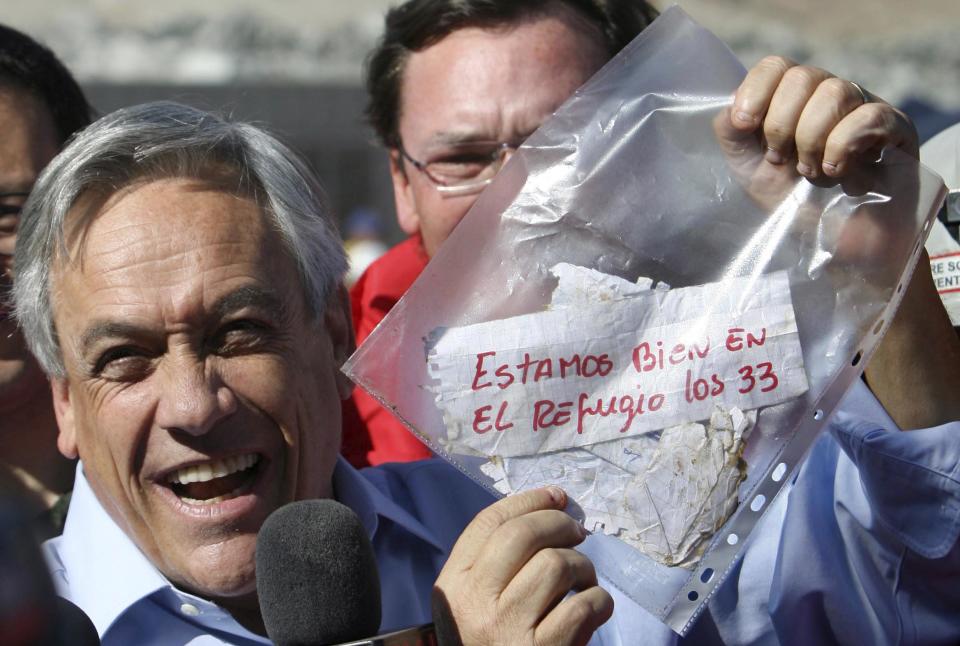Chile marks second anniversary of mine collapse
SANTIAGO, Chile (AP) — A cross in the middle of the world's driest desert now marks the spot where a mine collapse trapped 33 men a half-mile under the earth for 69 days.
Chile on Sunday marked the second anniversary of the cave-in at the San Jose mine in the Atacama desert, honoring the miners who survived in entrapment longer than anyone else before.
President Sebastian Pinera traveled to the northern city of Copiapo to join the men at the mouth of the mine that nearly became their rocky grave. They unveiled a five-meter (16 1/2-foot) cross as part of a monument known as the "The 33 miners of Atacama: The miracle of life."
"In such extreme, difficult circumstances you were able to bring out the best in yourselves," Pinera told the miners at a ceremony. "You fought for your own lives with such strength, faith, hope and comradeship that it touched the fibers of men and women around the world."
The miners said it felt like an earthquake when the shaft caved in above them on Aug. 5, 2010, filing the lower ridges of the copper and gold mine with suffocating dust. Hours passed before they could even begin to see a few steps in front of them. Above them tons of rock shifted constantly, threatening to bury them forever.
People on the surface didn't know for more than two weeks that the men had survived the collapse, and the 33 stretched a meager 48-hour store of emergency food for 17 days, eating tiny capsules of tuna and sips of expired milk. A narrow shaft finally reached their haven and the world learned they were alive.
That shaft allowed food and water to reach the men while rescuers drilled a bigger escape hole. Finally, in a flawless operation that ended in the early hours of Oct. 13, the miners were hauled up one-by-one in a cage through 2,000 feet of rock.
Back on the surface they were received as heroes for surviving so long in the sweltering, dark depths of the overexploited century-old mine. Their globally televised rescue mesmerized millions worldwide. They got paid trips to the Greek Islands, visited the Real Madrid stadium in Spain and paraded at Magic Kingdom in Disney World.
But the fantasy began to crumble on their return home.
Many ran out of money and had to scratch out a living in the dusty, barren working-class neighborhoods and shantytowns of the desert city of Copiapo. Some began suffering from health and psychological problems. Others took to alcohol and drugs. Most are still kept up at night by memories of their ordeal.
"I still suffer from the nightmares," said Alex Vega, 33, who vowed never walk into a mine again.
"I'm on psychiatric treatment because I haven't been able to overcome all of it," said Vega, who has traveled to Central America and the United States giving inspirational talks and works operating construction machinery. He receives a pension of $200 a month to compensate for his psychological problems.
But doctors say the aftermath could have been worse.
"I still see them as great people who were able to go through something terrible," said Alberto Iturra Benavides, the head psychologist who worked with the miners.
"What surprises me most is the strength of their commitment to life. They could have had deep personality alterations, but it hasn't happened. People can't even begin to understand how terrible it was for them down there," he added.
Chile announced last year that 14 of the miners who are older than 50 or suffer from health problems that keep them from working would receive a lifetime pension of $540 a month. The miners have been secretive about the details of what happened during their entrapment, especially the days before they were found, hoping to strike gold in a film deal.
Now they're banking all their financial hopes on a Hollywood movie deal signed with "Black Swan" producer Mike Medavoy. The production will draw on a book being written about them by Pulitzer Prize-winning journalist Hector Tobar.
"The 33," as they are known, will appear as extras in the film, said Remberto Valdes, a lawyer who represents the men. He said they have already received about $9,000 each for the film and $2,500 for the book and will get royalties from ticket sales.
Their survival story sent the president's popularity ratings soaring. The billionaire businessman supervised the 22-hour rescue and bear-hugged the miners on their way out. Pinera also traveled the world showing the handwritten note by one of the miners that first alerted rescuers: "We are all well in the shelter, the 33 of us."
Since then, widespread protests demanding improvements in education and a wider distribution of wealth have eroded Pinera's support and he has become Chile's most unpopular leader since the country returned to democracy in 1990.
The San Jose collapse brought the mine's safety record into focus and put mining, Chile's top industry, under close scrutiny. A congressional commission last year found its owners responsible for the cave-in at the 125-year-old mine.
Mining-related deaths fell 36 percent last year to 27, compared to 41 in 2010, the year of the cave-in, according to a report by the Mining Ministry. The report says accidents at Chile's 8,500 mines last year also fell by 40 percent, their lowest level in 21 years thanks to increased oversight by inspectors.
"The accident left us lessons," Mining Minister Hernan de Solminihac said in a story published Sunday by the newspaper El Mercurio. "We took those seriously to avoid a tragedy."
At the San Jose mine, Pinera urged lawmakers to fast-track the passing of a mining law that is stuck in Congress. If passed, it would create a new system of information safety, increase the number of inspections at mine sites and put harsher penalties on those who break the law.
"We all know this law is necessary," he said. "It sanctions anyone who doesn't abide by their duty to protect the security and dignity of miners."
___
Associated Press writer Federico Quilodran contributed to this report.
___
Luis Andres Henao on Twitter: https://twitter.com/LuisAndresHenao





